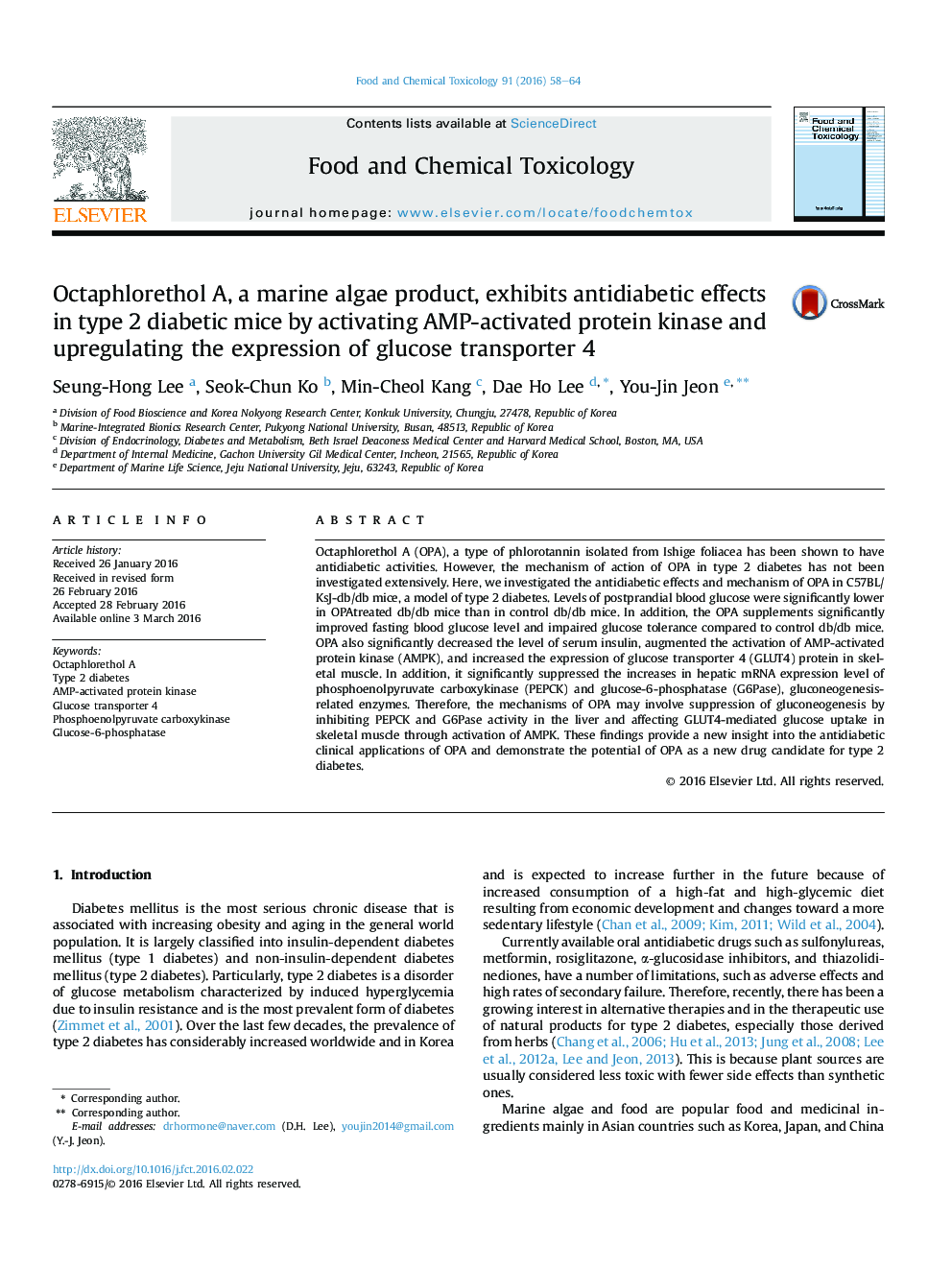| Article ID | Journal | Published Year | Pages | File Type |
|---|---|---|---|---|
| 5849399 | Food and Chemical Toxicology | 2016 | 7 Pages |
â¢The mechanism of action of octaphlorethol A (OPA) in type 2 diabetes has not been investigated extensively.â¢Here, we investigated the antidiabetic effects and mechanism of OPA in C57BL/KsJ-db/db mice, a model of type 2 diabetes.â¢OPA exerts beneficial effects on hyperglycemia as well as improves hyperinsulinemia and impaired glucose tolerance.â¢The mechanism of OPA involves increase in GLUT4-mediated glucose utilization via activation of AMPK in muscle.â¢In addition, OPA suppresses hepatic gluconeogenesis in type 2 diabetic db/db mice by inhibiting G6Pase and PEPCK activity.
Octaphlorethol A (OPA), a type of phlorotannin isolated from Ishige foliacea has been shown to have antidiabetic activities. However, the mechanism of action of OPA in type 2 diabetes has not been investigated extensively. Here, we investigated the antidiabetic effects and mechanism of OPA in C57BL/KsJ-db/db mice, a model of type 2 diabetes. Levels of postprandial blood glucose were significantly lower in OPAtreated db/db mice than in control db/db mice. In addition, the OPA supplements significantly improved fasting blood glucose level and impaired glucose tolerance compared to control db/db mice. OPA also significantly decreased the level of serum insulin, augmented the activation of AMP-activated protein kinase (AMPK), and increased the expression of glucose transporter 4 (GLUT4) protein in skeletal muscle. In addition, it significantly suppressed the increases in hepatic mRNA expression level of phosphoenolpyruvate carboxykinase (PEPCK) and glucose-6-phosphatase (G6Pase), gluconeogenesis-related enzymes. Therefore, the mechanisms of OPA may involve suppression of gluconeogenesis by inhibiting PEPCK and G6Pase activity in the liver and affecting GLUT4-mediated glucose uptake in skeletal muscle through activation of AMPK. These findings provide a new insight into the antidiabetic clinical applications of OPA and demonstrate the potential of OPA as a new drug candidate for type 2 diabetes.
